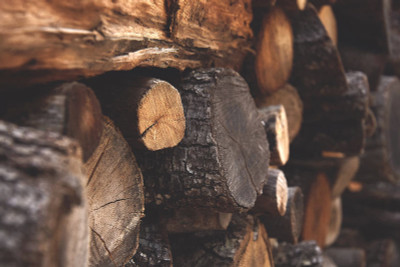Understanding the Process of Sustainable Harvesting
15th Oct 2019

The uses for exotic wood in woodworking projects is vast. However, growing trees takes a long period of time before that young tree can be harvested. Exotic wood trees are often limited in numbers, which makes balancing the demand for these unique woods with the reality of a small supply that needs time to replenish itself. Many studies show that human consumption of trees is higher than the ability to regenerate them.
Forestry is a long-term enterprise, based on a product that cannot be easily or quickly regenerated. Although there is exploration into alternatives, such as hemp or bamboo, the truth is that wood is still the primary source of many products and woodworking projects.
If you love these exotic woods, you might be wondering if such a balance can be achieved. The aim of sustainable harvesting is to find that balance and allow woods to continue to grow and mature, instead of being cut down too soon. You might be wondering what sustainable harvesting is and how the process works.
What is Sustainable Harvesting?
First, it is important to note that the Earth requires forests to survive. The rainforests have often been referred to as the lungs of the planet, but to a large degree, every forest is part of that lung system. Forests absorb carbon dioxide and release oxygen into the atmosphere, while also helping to regulate the global climate. Clearly, we owe a lot to the trees that live throughout our planet.
Sustainable forestry is based upon practices that mimic the natural patterns of disturbance and regeneration found naturally within the forest itself. There is a balance between the needs of the community, the environment, the wildlife, and the forest itself. What are some of the practical steps that can be taken?
Establish Conservation Areas to Protect Biodiversity
A forest is a unique bed of biodiversity from the plants and trees to the insects and wildlife, as well as its water resources and soils. These things all work together and when one gets out of balance, the whole ecosystem can be thrown out of whack. Conservation areas are meant to preserve that biodiversity and allow our planet to continue to thrive. That means these properties are also not part of logging and other steps are taken to protect the integrity of the forest itself.
The Amazon rainforest , home to many exotic woods, have been logged extensively. However, they also face fires and other issues that put various exotic woods in jeopardy.
Having a Harvesting Plan
For businesses that depend on logging exotic wood, having a harvesting plan is a way to create a sustainable harvest. Businesses can opt to do a limited, small-scale clear that would mimic a natural disturbance. These natural disturbances could be seen as a fire or landslide. Selective harvesting also includes looking for trees that have already fallen or may interfere with the growth of other trees. However, a harvesting plan also need to be laid out in such a way that the forest has a chance to regenerate and thus maintain its overall ecological health.
Planting Trees Plays a Part
The other aspect of a sustainable harvest is planting trees to replace the ones logged. Tree plantations can be put on land that has already been deforested or degraded. Doing so contributes to improving the overall health of the land and can help to meet demand for wood, since these plantations are run like tree farms. The goal of these plantations can also be the long-term protection, restoration, and conservation of natural forests.
Picking the Right Techniques
When it comes to harvesting exotic wood, the bulldozer approach is no longer necessary. Today, timber can be harvested without damaging other parts of the forest. Known as reduced impact techniques, loggers can fell and extract trees in a way that doesn’t cause additional damage to the surrounding trees.
Using these techniques can also help to minimize erosion, waste, and more, while still allowing for the exotic wood products to be produced. Our team works with loggers who put these practices into place, thus allowing us to continue to provide these beautiful woods for your projects.
Ecological and Economical Stability
All of these efforts are meant to allow for exotic woods to be around both now and into the future. Sustainable harvesting is a way to balance the ecological and economic realities that are part of logging. Various states and countries have implemented logging standards aimed at protecting forests for future use by using sustainable harvesting and planting techniques right now.
Foresters, in deciding what trees to plant to replace the logged ones, will consider a host of factors. These factors include tree species, tree value, availability of loggers and equipment, the quality of the site, and more to determine the best regeneration methods. There are also the aspects of commercial clearings that can leave weaker trees behind, while strong ones are logged. Sustainable harvesting takes into account the long-term health of forest in which they are working.
In our efforts to provide you the best exotic and domestic wood for your various woodworking projects, we continue to work with foresters who practice sustainable harvesting. If you are looking for a specific exotic or domestic contact our team today to find out if we have it available.
Global Wood Source is a family owned and operated lumber yard and mill specializing in exotic woods from around the world and rare domestics. We personally acquire and inspect each piece of log and timber obtained from forests and jungles worldwide.

